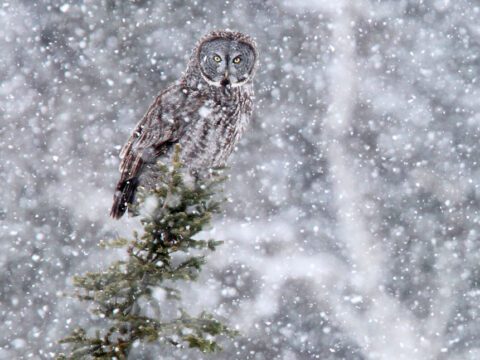A Fifth of All Bird Species Occur in Cities. Could Urban Living Be Made Easier?
By Kathi Borgmann
January 4, 2024Scientists studying birds in urban areas are finding some unique evolutionary adaptations to city life—and they say it’s time for cities in turn to make some adaptations for birds.
From the Winter 2024 issue of Living Bird magazine. Subscribe now.
It’s four in the afternoon and I’m navigating busy streets and skyscrapers on my way to the New York Times Climate Forward Summit in Midtown Manhattan. After a few hours, my senses were overloaded—I was ready for a break. So I made my way over to Bryant Park, a little pocket of green in the shadow of Times Square, to relax.
But to me—fresh off the bus from Ithaca in Upstate New York—the park was anything but serene. Hundreds of people were scattered about, enjoying games and conversation, and practicing yoga. I sat down on a park bench and immediately spotted two White-throated Sparrows and a Common Yellowthroat foraging on the ground, a bit surprising for me to see in such a populated park. I was even more surprised to spot an Ovenbird, a typically reclusive species of hardwood forests.
I ran over to share my news with a couple other birders peering into nearby bushes with their cameras, and it turns out I had only seen the tip of a migratory bird wave that was moving through NYC that day. Earlier someone had spotted a Gray-cheeked Thrush, a Black-and-white Warbler, and a Mourning Warbler in the park.
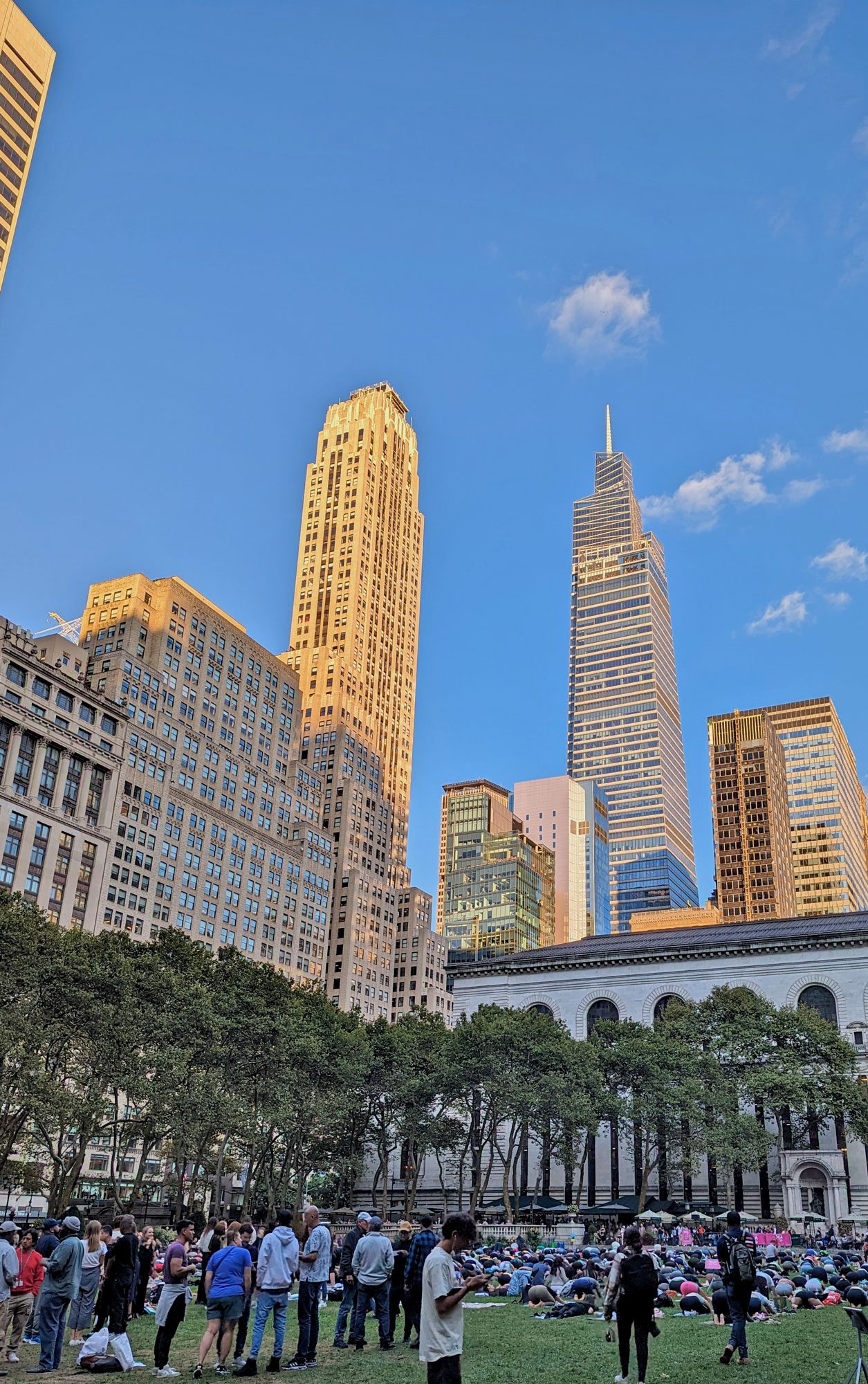
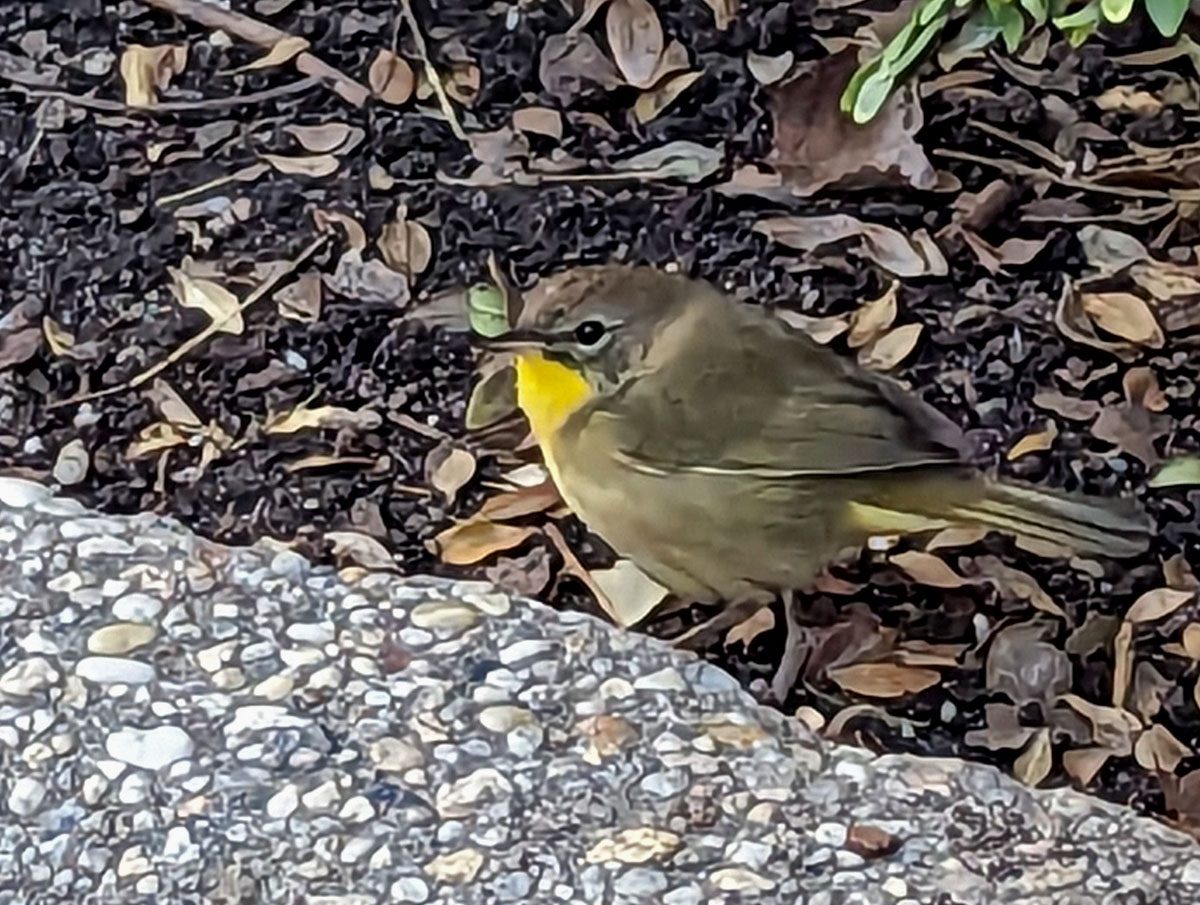
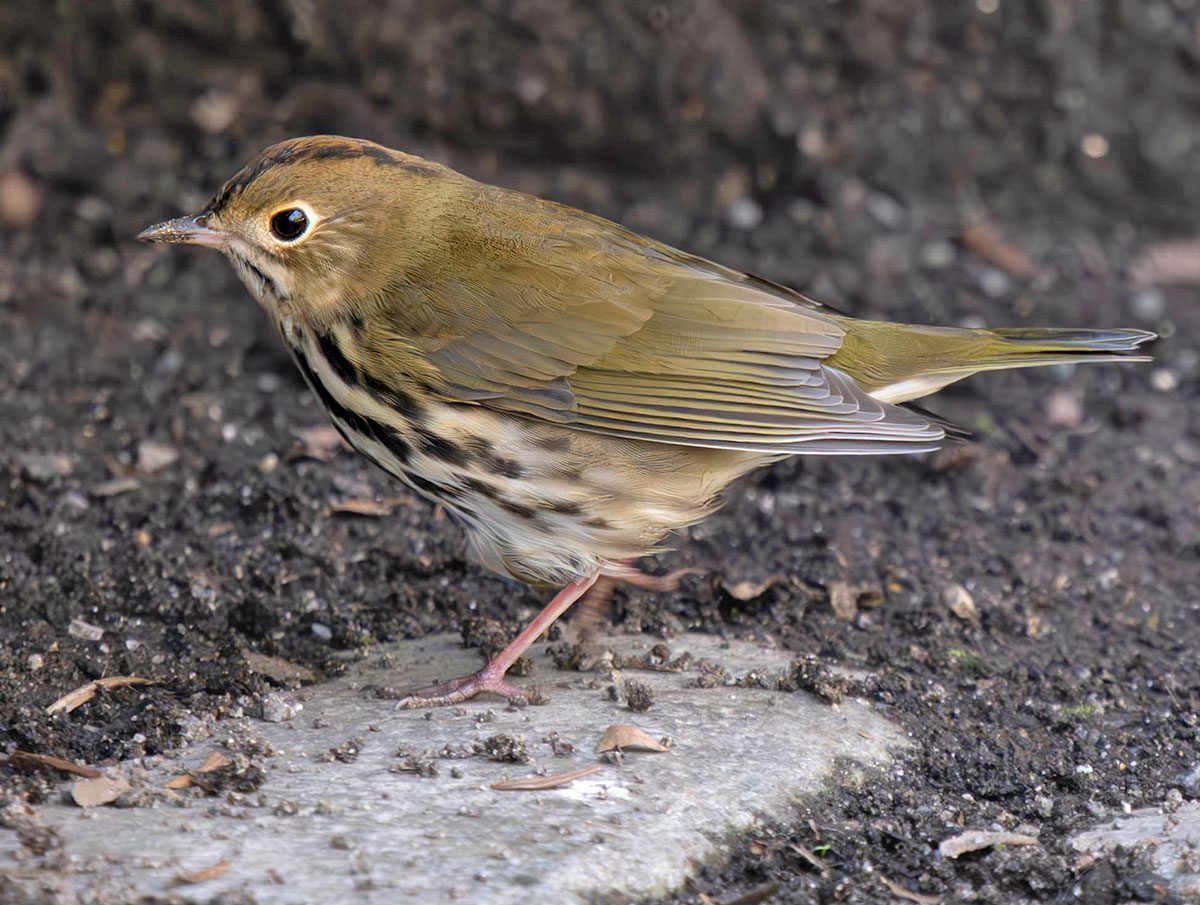
The diversity of birdlife in cities goes way beyond pigeons. One study published in 2014 in the scientific journal Proceedings of the Royal Society B documented that 20% of the world’s bird species occur in urban areas. In the United States, about 83% of people are crammed into the urban areas that make up only 3% of the nation’s total land area—meaning the birds in America’s big cities are dealing with the same human-generated noise and sensory-overload stresses that I was experiencing in NYC.
A growing body of research is revealing the surprising ways that some bird species are changing to adapt to urban life. Scientists are finding that some birds alter how they sense the world, how they communicate, even their physical characteristics to survive in cities.
But even highly adaptable bird species have their limits. With North American bird populations plummeting by 3 billion birds since 1970, many scientists say it’s time for cities to make some adaptations for the good of the birds, and the people, who live there.
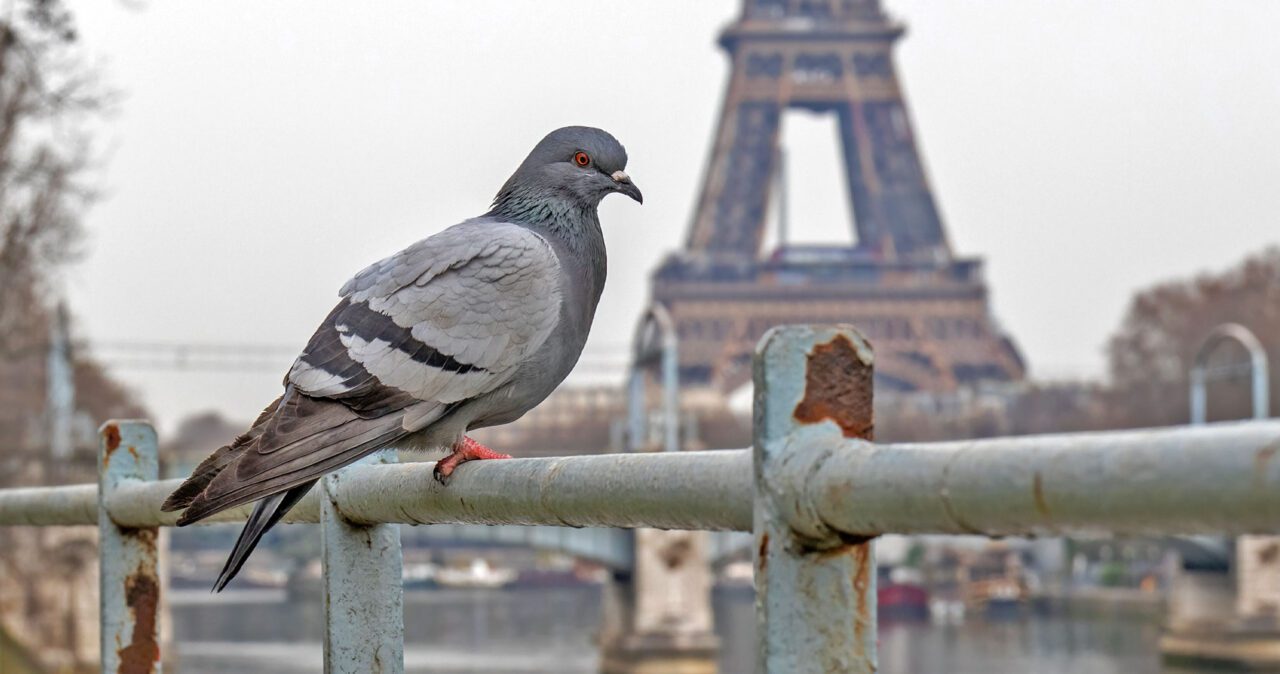
A Suite of Similarities
Scientists have found that the urban birds that can hang on in built environments tend to have a lot in common. In 2023 a group of more than 50 scientists from research institutions spanning the U.S. to Colombia to Switzerland to Australia conducted a study of more than 5,000 bird species in urban areas around the world. Using data from the Cornell Lab of Ornithology’s eBird program, the group analyzed birder checklist submissions from 379 cities across 48 countries and discovered that birds in urban areas tend to be smaller, eat a wider variety of foods, lay fewer eggs, and forage over smaller areas than their counterparts in rural areas. Their research, published in Nature Communications, referred to this package of characteristics as “urban trait syndrome.”
“Cities tend to select for certain kinds of traits. In urban areas, for example, you don’t have species that will forage over large areas, because species that forage more broadly are more likely to encounter a vehicle or building that could lead to mortality,” says Frank La Sorte, a coauthor on the study who at the time was a Cornell Lab research associate.
La Sorte says urban pressures tend to favor bird species with similar traits that allow them to survive in urban areas and filter out species that lack those behaviors or characteristics.
Birds that thrive in urban areas also tend to have smaller eyes. Todd Jones, a postdoctoral fellow at the Smithsonian Migratory Bird Center, and colleagues compared birds that live within San Antonio, Texas, and birds of the same species that live outside of the city. They found that birds that were year-round residents in the city, such as Northern Cardinal and Carolina Wren, had eyes that were about 5% smaller than cardinals and wrens on the city’s outskirts. But the pattern didn’t hold true for migratory species. Painted Buntings and White-eyed Vireos had similar-sized eyes in the city and in rural areas.
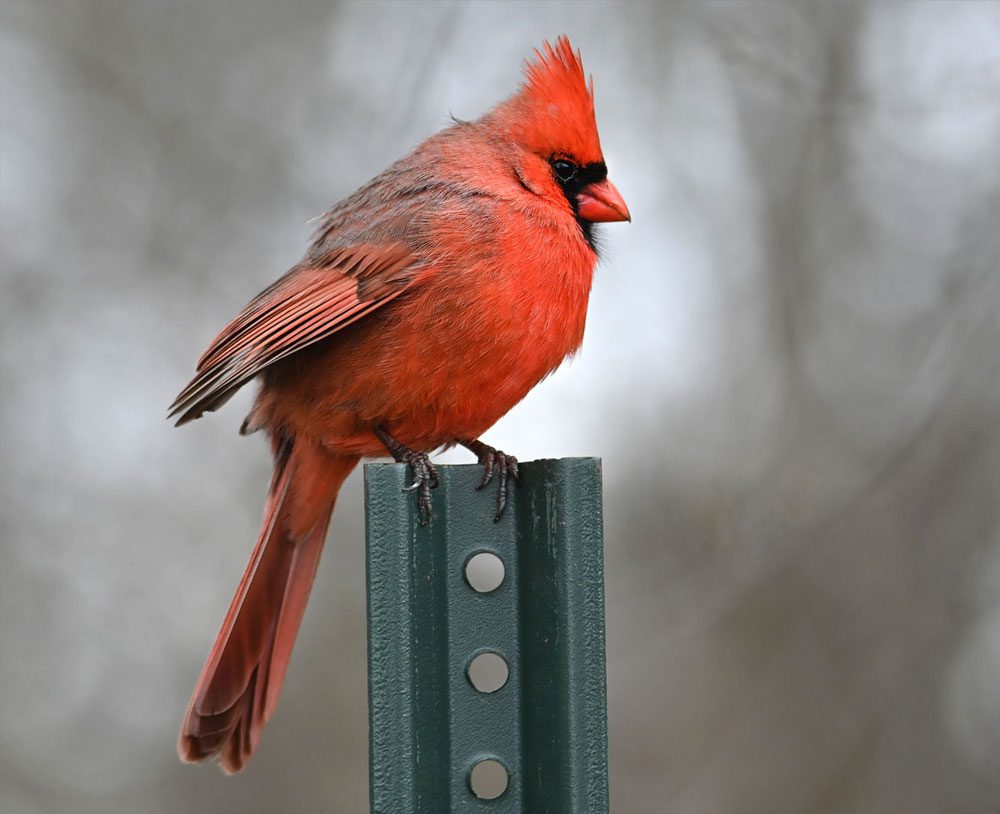
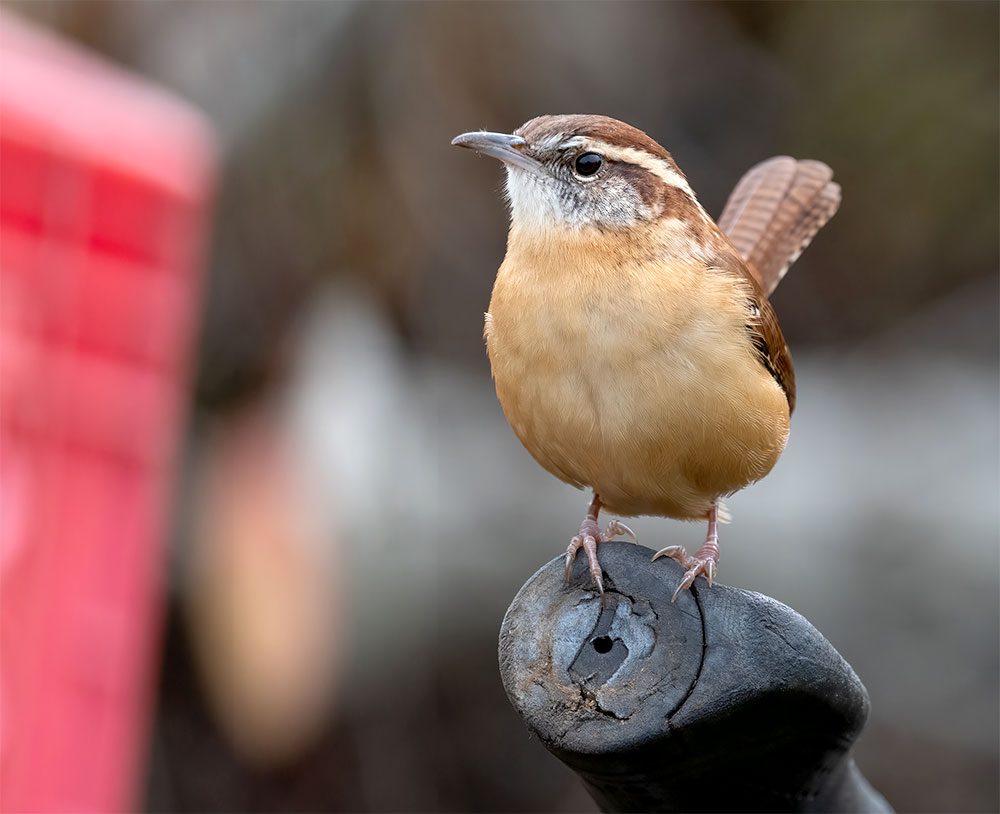
The study, published in the journal Global Change Biology in September 2023, could help explain the devastating effect that light pollution has on migratory birds. City lights can disorient birds, which is why building collisions are a leading cause of bird mortality. Scientists estimate that up to 1 billion birds die each year after colliding with windows in the United States and Canada. Over time, the cardinals and wrens in cities may have evolved smaller eyes that are better at dealing with bright lights, whereas the migratory buntings and vireos may be more susceptible to the glare of the city lights.
“This study shows that residential birds may adapt over time to urban areas, but migratory birds are not adapting, probably because of where they spend the winter—they are less likely to have the same human-caused light and noise pressures,” says Jennifer Phillips, a Washington State University wildlife ecologist and study coauthor, in a press release. “It may make it more difficult for them to adjust to city life during the breeding season.”
Noise pollution also permeates urban areas, and that can impact how birds communicate. The low-frequency drone from cars, planes, and industry is a common sound in many cities. For some bird species, that noise prevents their songs and calls from being heard by other birds, because they vocalize at similarly low frequencies. Bird song is essentially drowned out by urban noise, a phenomenon that scientists call signal masking.
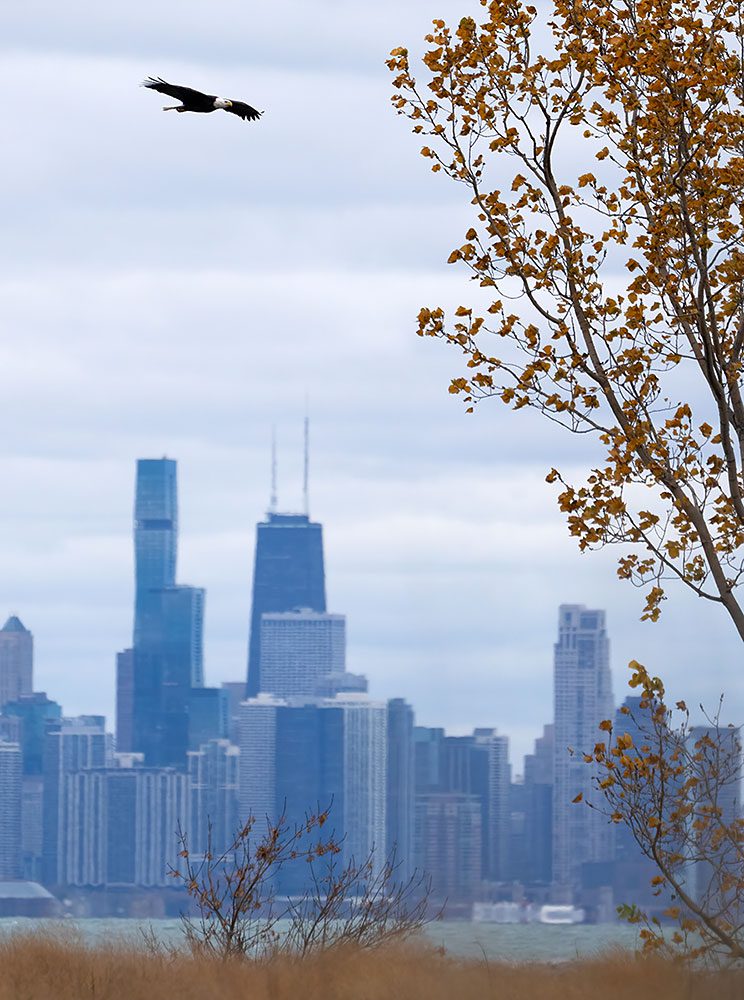
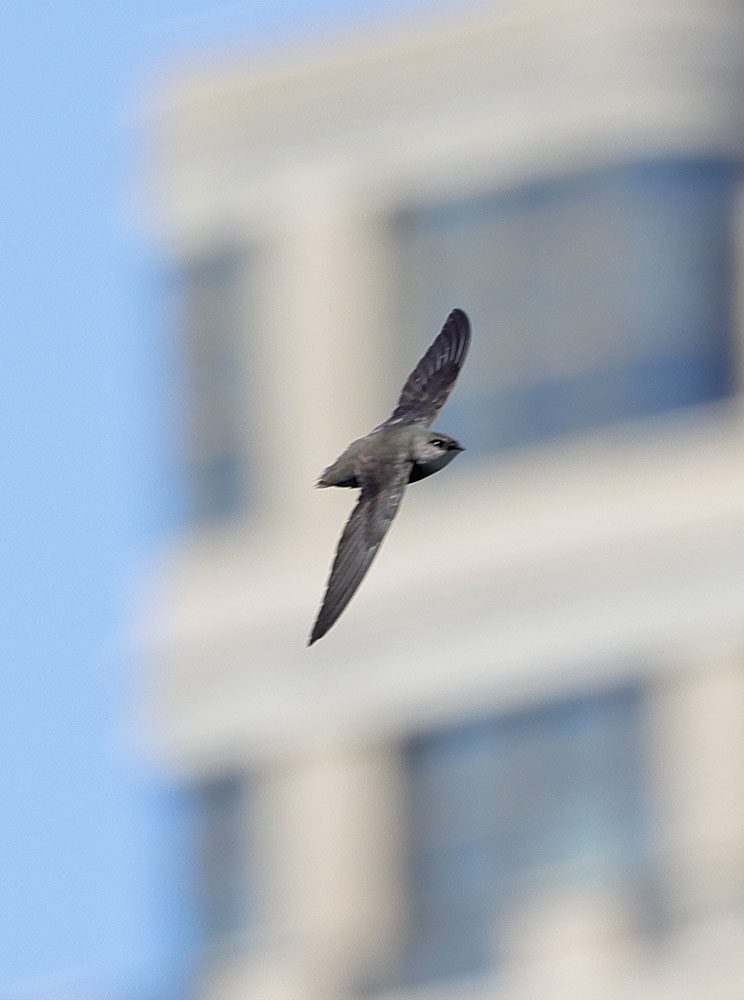
To be heard over the din, birds around the world tend to sing at higher frequencies in noisy environments, according to an analysis of 36 published papers conducted by scientists at the University of Quebec at Trois-Rivières. The 2016 research reported that on average birds in the study were shifting their song frequencies by 400 hertz—about the same difference as between the high C-sharp and E notes on a piano.
Frequency isn’t the only aspect of bird song that’s changing, according to a study of Northern Cardinals in Columbus, Ohio. The 2016 research—conducted by Desiree Narango, then a master’s student at Ohio State University, and Amanda Rodewald, senior director of Avian Population Studies at the Cornell Lab—found that cardinals within the city sang faster and for longer (and at higher frequencies) than cardinals in rural areas.
Around the same time, another study by Tulane University scientists found that White-crowned Sparrows in San Francisco Bay changed their tune to compete with urban noises. The study showed that San Francisco sparrows sing higher-frequency songs with faster trills and shorter whistles than rural sparrows. Then in a stunning shift, the sparrows changed their tune again. A follow-up study during the 2020 Covid-19 pandemic shutdown, when much of San Francisco was silenced, found that the sparrows responded quickly and started singing lower-frequency songs again. The study, published in the journal Science, suggests that bird song is flexible, and at least some species might be able to adapt.
But Elizabeth Derryberry—associate professor at the University of Tennessee, Knoxville, and lead author on the Science study—says that flexibility can only go so far.
“Singing louder or singing at higher frequencies has a threshold effect—birds can’t get infinitely louder,” says Derryberry. “Once noise reaches a certain level, there are limits to how far their signal can transmit, and that could affect the ability to acquire mates and defend territories.”
And even if males can change their tune to be heard and attract females, doing so does not always mean those higher-frequency singers are good mates. In 2018 Narango and Rodewald—the scientists who had studied urban cardinal song frequencies in Columbus, Ohio—turned their attention to the reliability of cardinal song as a signal of mate quality. In a study published in the journal Urban Ecosystems, they found that the cardinal males singing higher-frequency songs attracted mates, but not in high-quality habitats as their song might suggest. In other words, the changing song characteristics in response to urban noise can decouple what the song stands for. The male cardinals in the study had young that were in poorer condition, in part due to poorer habitat.
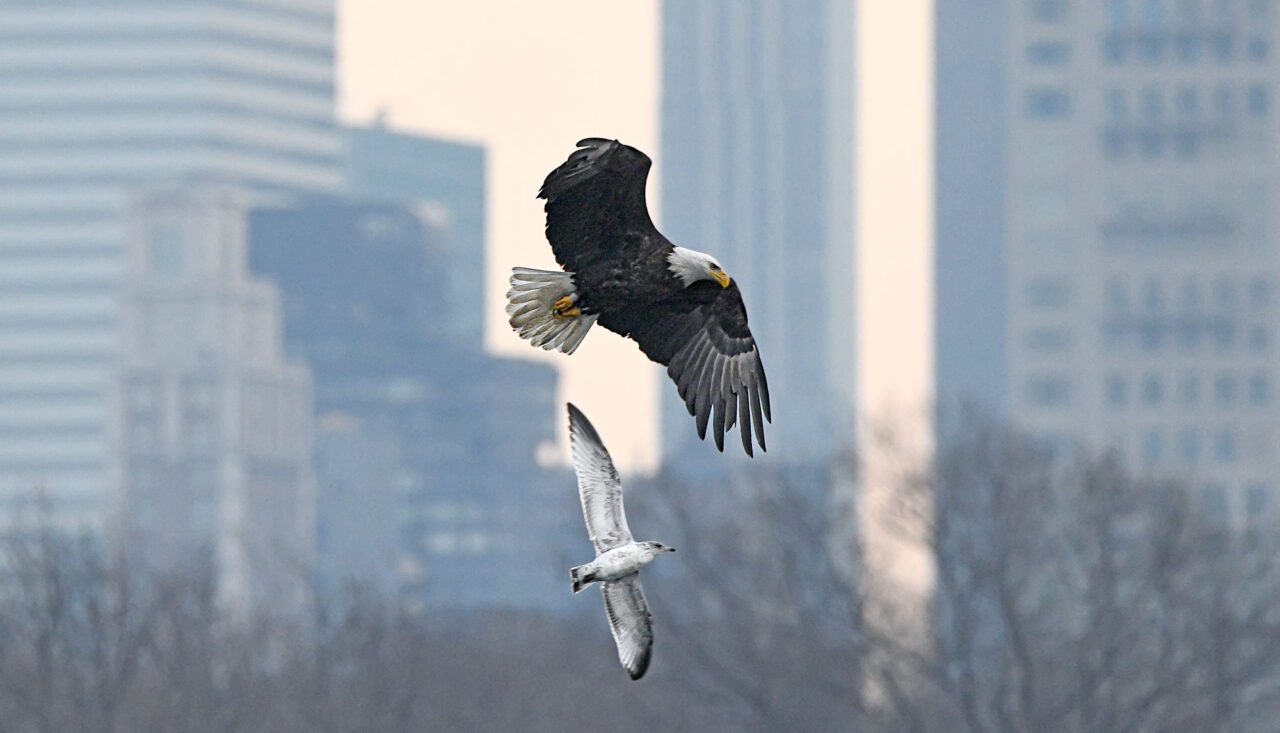
Additional research by Rodewald on cardinals has shown that the same kind of decoupling may be occurring with plumage brightness.
Birds obtain the bright yellows, reds, and oranges in their feathers from carotenoids in the foods they eat. Natural food sources high in carotenoids are also a rich source of antioxidants with immune-boosting properties, so birds with bright plumes are typically in better condition—thus brightness can be a signal of male quality. But in the eastern United States, many urban areas are filled with non-native honeysuckle shrubs. Honeysuckles provide birds with a source of carotenoids, but they are also very nutrient poor. Ornithologists refer to honeysuckle berries as junk food for birds, high in sugar and low in essential fats and nutrients.
In a 2011 study published in the journal Ecology, Rodewald and colleagues found that cardinals with access to honeysuckle berries in urban areas had brightly colored plumage, but those bright plumes didn’t translate to higher reproductive output.
“In urban areas,” says Rodewald, “the brightness of male Northern Cardinals stops being an honest signal of male quality.”
On the other hand, less brightly colored birds in urban areas may be in better condition than their plumage suggests. Urban areas have an abundance of birdseed—which is carotenoid poor, but nutrient dense. In both cases, Rodewald says, plumage coloration no longer signals male quality.
Beyond cardinals, research shows that the overall worldwide trend among urban birds is toward the development of duller plumage—a phenomenon scientists call “urban dullness.” The trend appears to be driven by pollution from heavy metals, such as cadmium and lead. Heavy metals can decrease the amount of carotenoids produced by plants, which via the food chain could reduce the availability of carotenoids for birds—resulting in less bright birds. In Belgium, for example, Great Tits that live around heavy-metal sources such as industrial facilities have duller yellow plumage than rural tits, according to a 2020 study.
Over time these pressures from air pollution, noise pollution, and light pollution add up. The bird species that can’t adapt to urban life disappear, leaving behind birds that sound and look similar.
“You end up with a smaller set of species that can survive,” says La Sorte, “resulting in less biodiverse cities.”
Yet hundreds of species can be found breeding in urban areas, and every spring and fall millions of birds migrate through U.S. metropolises, compelling many conservationists and scientists to look for ways to make cities more bird friendly.
“Cities present many challenges to birds,” Rodewald says, “but that doesn’t mean that cities are a lost cause when it comes to wildlife conservation.”
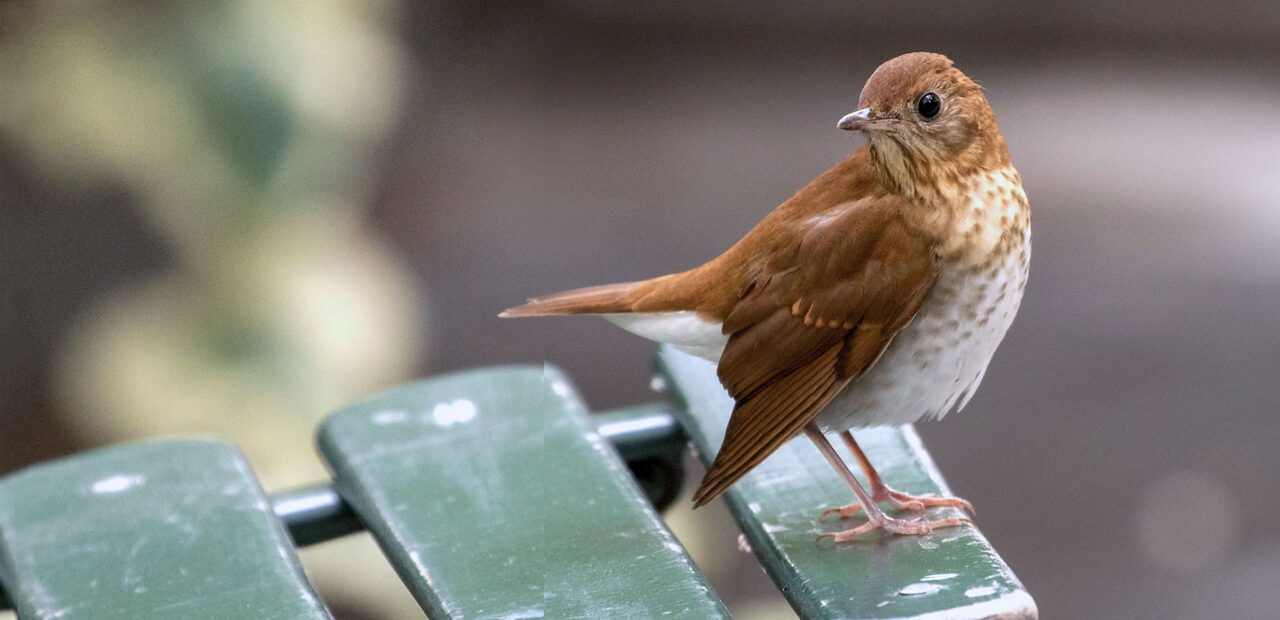
What Cities Can Do for Birds
To document the value of cities to bird conservation, a team of scientists from the Cornell Lab, Auburn University, and Rutgers University embarked on a study published last year that combined eBird checklists in the U.S. with lists of endangered bird species, critical habitat designations for endangered species, and 2010 census data. They discovered that birds listed under the Endangered Species Act (such as Piping Plover, Wood Stork, and Kirtland’s Warbler) can be found living in or migrating through 81% of urban areas (defined as cities with populations of more than 50,000 people).
“Our results show that cities can play an important part in conserving wildlife,” says La Sorte, a coauthor on the study.
In fact, cities can provide unique opportunities for the reintroduction of some endangered species, especially where reintroduction may be too fraught in their native habitat. In New Zealand, habitat loss and introduced predators took a toll on the New Zealand Kaka, an endangered parrot. The city of Wellington, with its large network of native forest patches, proved to be a good place to reintroduce the species. In these urban parks, officials could offer the parrots nectar and parrot pellets inside fenced areas that excluded predators.
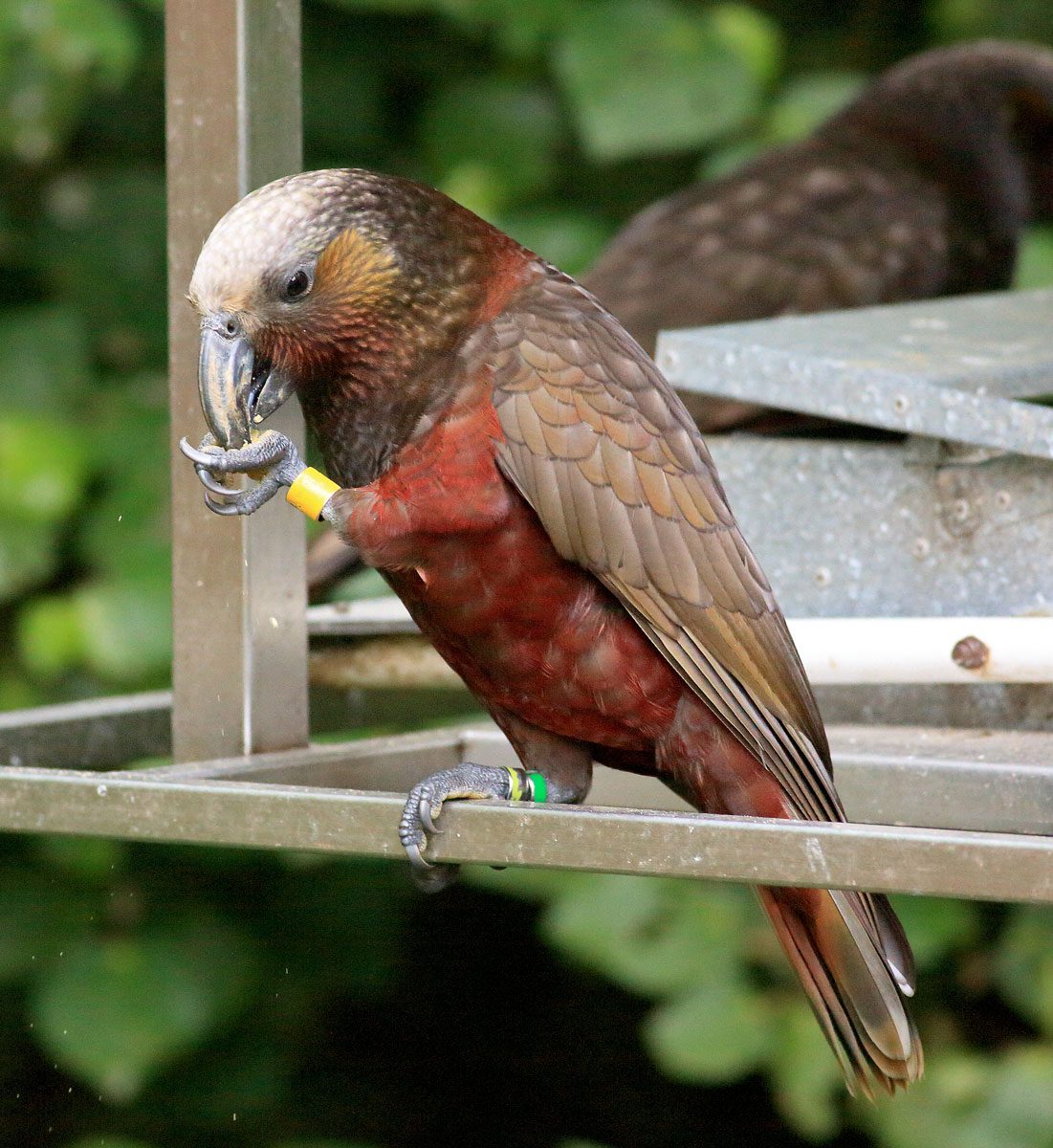
City parks don’t need to be big to provide useful habitat for birds. In another study using eBird data that was published in September 2023, La Sorte and colleagues found that collections of small urban parks can support higher species richness than larger urban parks. The study suggests that’s because migratory birds are more likely to turn up at several smaller parks scattered across an urban area.
“Even small parks are beneficial,” says La Sorte, “because migratory birds are able to capture some resources and that will allow them to continue their journey or find better stopover habitat.” The migratory birds I spotted in Bryant Park were taking a break in what little refuge was available and hopefully continuing to make their way south. But there are more benefits to city parks, green spaces, and trees in urban areas than migratory bird habitat. Several medical studies in big cities have shown that trees can have health benefits for people—such as providing relief from urban heat.
The concrete, pavement, and steel of cities absorb heat during the day and release it at night, creating what scientists call urban heat islands. The U.S. Environmental Protection Agency has found that temperatures in these urban heat islands can get up to 22°F degrees hotter than surrounding suburban and rural areas, increasing the risk of heat exhaustion, heat stroke, and exacerbated heart and respiratory problems for sensitive populations.
“Heat is the number-one killer [of people] of all the weather phenomena,” said Eleni Myrivili, global chief heat officer of the United Nations and Arsht-Rock Resilience Center, at the New York Times Climate Forward Summit. “The best thing for cities is to bring nature in.”
The EPA found that planting native trees can significantly reduce urban temperatures and ameliorate the impacts of urban heat islands on human health and well-being.
“The solution is pretty straightforward—plant trees,” says Roxanne Bogart, coordinator for the Urban Bird Treaty program at the U.S. Fish and Wildlife Service. “It’s so important for people and wildlife.”
But unfortunately, in the United States access to green space is not equitable.
“Many of the people living in low-income neighborhoods have a higher percentage of people of color and immigrants with little access to green spaces,” says Marilú Lopez-Fretts, project leader for the Cornell Lab’s Celebrate Urban Birds project. According to the Trust for Public Land, one in three Americans does not have access to green space within a 10-minute walk of their home.
“When you lack green space,” explains Tykee James, president of D.C. Audubon in the nation’s capital, “you lack an area for outdoor recreation. And that outdoor recreation can be as simple as sitting on a park bench or sharing a meal or going on a walk. When that individual person doesn’t have access to the benefits of nature, those effects can lower a person’s lifespan.”
James says that communities without access to green space are more likely to suffer the adverse effects of urban heat, air pollution, noise pollution, and have poorer mental health. And he wants to fix that. D.C. Audubon is joining dozens of other organizations in support of the Outdoors for All Act, a bipartisan bill introduced in Congress by Senators Susan Collins and Alex Padilla in February 2023. The act seeks to codify the existing Outdoor Recreation Legacy Partnership program to ensure that funding cannot be diverted and is by law available for disadvantaged communities to create and restore much-needed green spaces.
Since the program began in 2014, the ORLP has been able to grant funds in only four years. But in years that funding was granted, more than 80 parks were created or restored across the U.S. The program, when funded, “has been tremendous in its ability to deliver federal dollars in low-income communities to upgrade or create parks,” says James.
In California, ORLP funds were used to turn a brownfield into a park with trails, boardwalks, and picnic areas for residents of northeast Los Angeles.
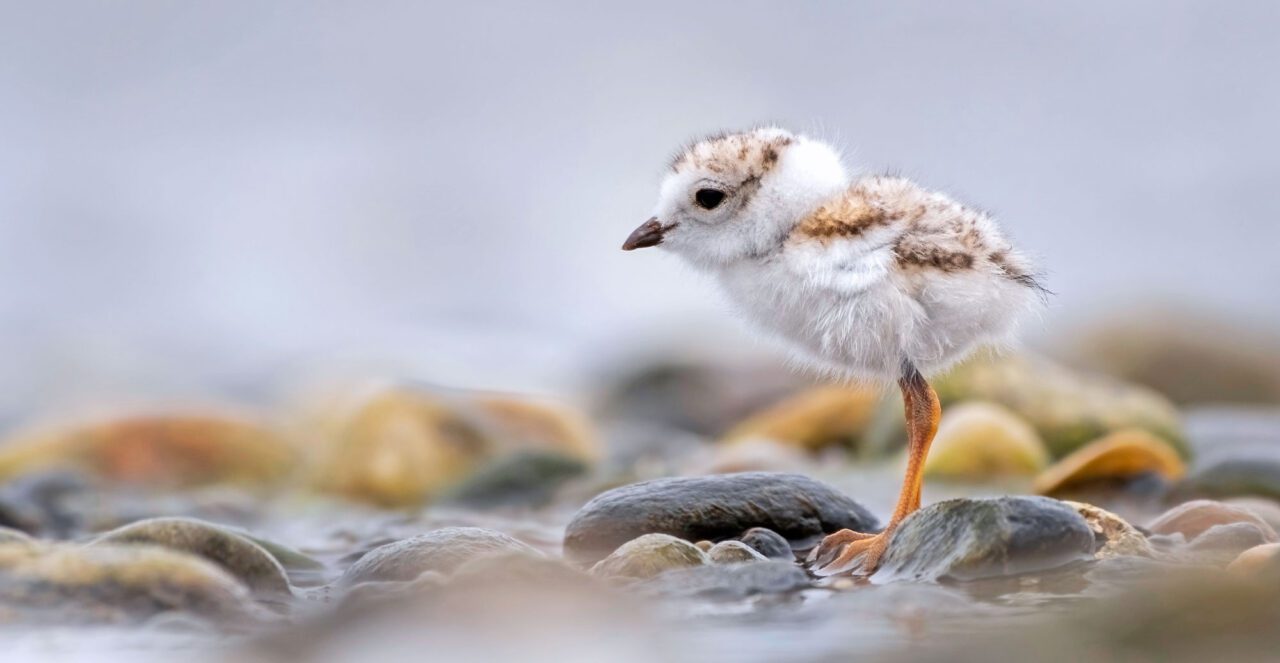
“Passing the Outdoors for All Act is essential for getting money to communities where they need it most,” says James.
In addition to dollars, both James and the Cornell Lab’s Lopez-Fretts agree that nature equity starts with listening.
“One key to building equitable green spaces is to engage with affected neighborhoods,” says Lopez-Fretts. “Work to improve the relationship, develop trust, and work together to create an action plan and a vision guided by the community.”
In New Haven, Connecticut, the Urban Bird Treaty program is working with local communities to restore urban green spaces that will improve water quality and provide better access to nature for people in nearby neighborhoods, while also providing habitat for migratory birds. The New Haven initiative also created a Green Job Corps to provide jobs and educational opportunities for disadvantaged youth.
“It’s collaborations like these,” says Bogart, “that create meaningful community engagement for people and provide habitat for birds.”
The key, says the Cornell Lab’s Rodewald, is to look for synergies in creating healthy habitats for birds and people.
“There is a lot to be said for the win-win conservation strategies and creating healthy urban environments that will benefit people as well as wildlife,” Rodewald says.

All About Birds
is a free resource
Available for everyone,
funded by donors like you
American Kestrel by Blair Dudeck / Macaulay Library
